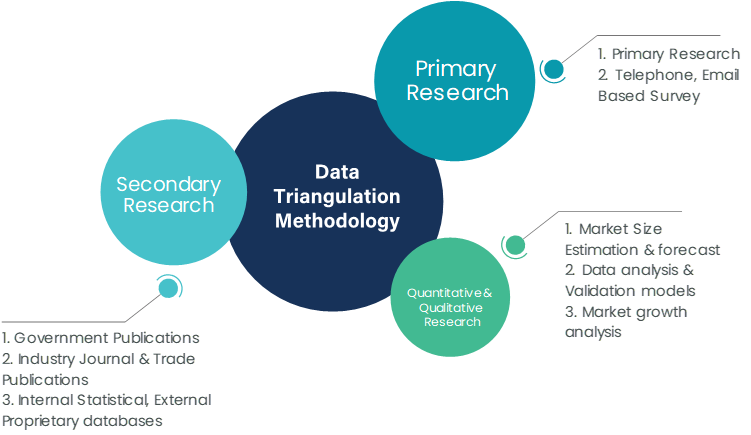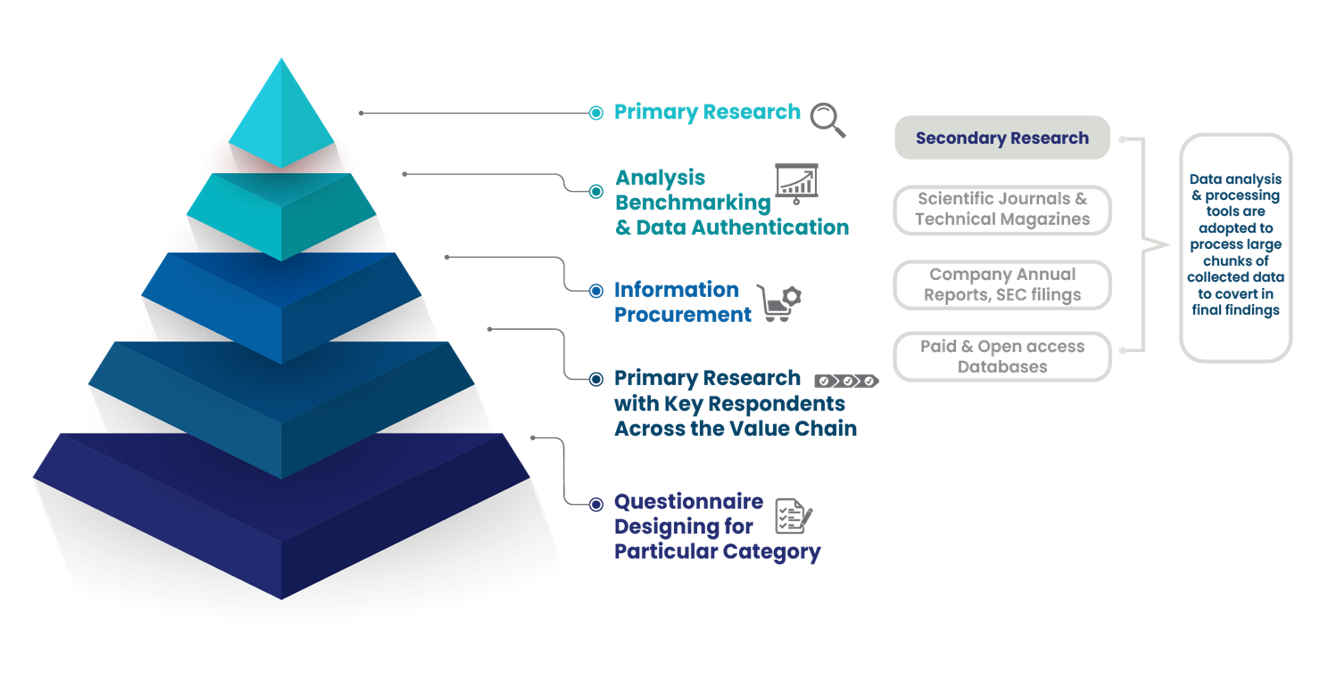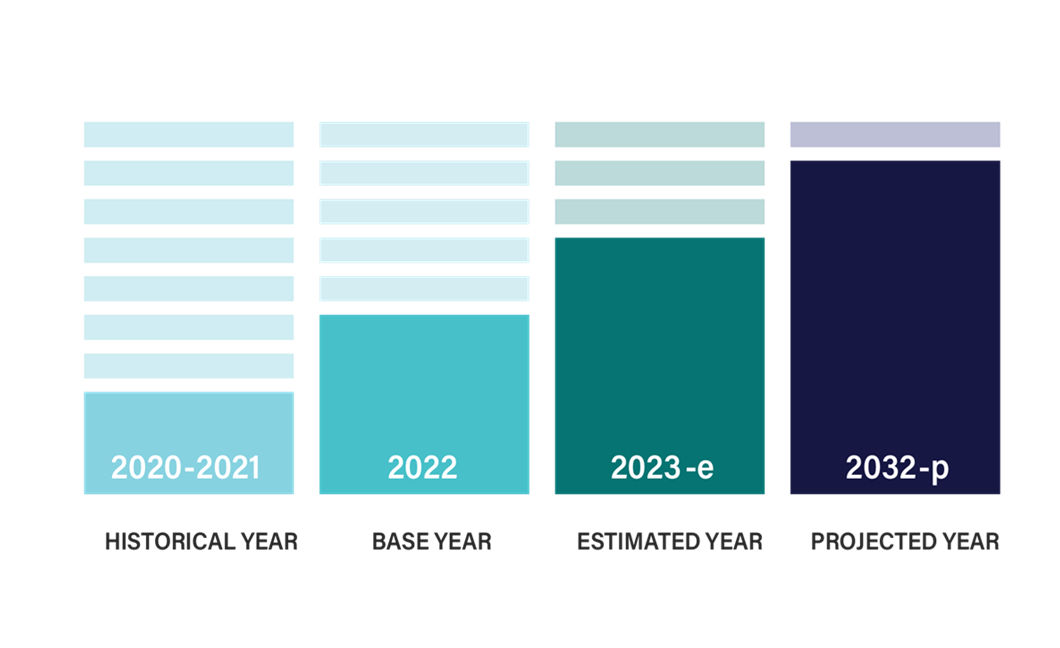

The global biodegradable industrial materials market is projected to experience substantial growth from 2024 to 2031, driven by increasing environmental concerns, government regulations, and rising demand for sustainable alternatives in various industries. Biodegradable materials are gaining significant traction as industries seek to reduce their carbon footprint and reliance on non-renewable resources. These materials are capable of decomposing naturally through biological processes, making them eco-friendly and an ideal solution to combat waste pollution.
In this report, International Market Research (IMR) provides a comprehensive analysis of the biodegradable industrial materials market, including market size, trends, key drivers, and future growth prospects for the period 2024 to 2031.
In 2024, the biodegradable industrial materials market is expected to be valued at USD 19.6 billion, with a projected compound annual growth rate (CAGR) of 10.2% from 2024 to 2031. The market is driven by the shift towards environmentally friendly alternatives, increased demand from packaging, agriculture, automotive, and construction industries, and the stringent regulations on single-use plastics and non-biodegradable materials.
The rise in public awareness about environmental issues such as plastic pollution, resource depletion, and greenhouse gas emissions has further fueled the demand for biodegradable industrial materials. As of 2024, industries are increasingly integrating biodegradable solutions to align with their corporate sustainability goals.
Governments worldwide are enforcing regulations that encourage the use of biodegradable materials and restrict the use of non-recyclable plastics. For instance, many countries have implemented bans on single-use plastics, requiring businesses to adopt alternative packaging solutions. The European Union’s directive on the reduction of plastic waste and initiatives like the U.S. Environmental Protection Agency’s (EPA) guidelines on sustainable materials are key factors pushing industries towards biodegradable solutions. According to IMR estimates, these regulations are expected to boost market demand by 15-20% over the next five years.
Consumers are becoming more eco-conscious and demanding products that have a lower environmental impact. A recent survey by IMR indicates that 70% of consumers are willing to pay a premium for products made from sustainable materials. This shift in consumer preferences is creating opportunities for manufacturers to invest in biodegradable materials, particularly in sectors like food packaging, personal care, and fashion. By 2031, consumer-driven demand is expected to contribute 40% of the total market growth.
Advances in biotechnology and materials science are enabling the development of innovative biodegradable industrial materials with improved performance characteristics. New formulations of bioplastics, biodegradable polymers, and bio-based composites are entering the market, offering comparable or even superior strength and durability to conventional materials. Innovations in polylactic acid (PLA), polyhydroxyalkanoates (PHA), and starch-based materials are expected to significantly drive market growth, with bio-based plastics accounting for 45% of market share by 2031.
The biodegradable industrial materials market can be segmented based on material type, end-use industry, and region.
a. Biodegradable Plastics
Biodegradable plastics are the dominant segment in the market, accounting for over 60% of the total market share in 2024. These include PLA, PHA, starch-based plastics, and biodegradable polyesters. The demand for biodegradable plastics is primarily driven by the packaging, agriculture, and consumer goods industries. As environmental regulations become more stringent, the market for biodegradable plastics is expected to grow at a CAGR of 11.5% from 2024 to 2031.
b. Biodegradable Paper and Cardboard
The use of biodegradable paper and cardboard in packaging is also on the rise, driven by the shift away from plastic-based packaging materials. This segment is projected to grow at a CAGR of 9.2%, reaching a market size of USD 7.8 billion by 2031.
c. Bio-based Composites
Bio-based composites, which are materials made from natural fibers such as hemp, flax, and bamboo, are gaining traction in industries such as automotive, construction, and electronics. The bio-based composites segment is expected to grow at a CAGR of 8.9%, reaching a market value of USD 4.5 billion by 2031.
a. Packaging
The packaging industry is the largest consumer of biodegradable industrial materials, accounting for 45% of the total market demand in 2024. The push for sustainable packaging solutions in food, beverages, and consumer goods is a key driver of market growth. By 2031, the biodegradable packaging segment is expected to reach USD 22.5 billion, growing at a CAGR of 10.8%.
b. Agriculture
In agriculture, biodegradable materials are used for products such as mulch films, plant pots, and seed coatings. These materials help reduce plastic waste in the farming sector and promote soil health. The agricultural segment is expected to grow at a CAGR of 9.5% from 2024 to 2031.
c. Automotive and Construction
The automotive and construction industries are adopting biodegradable materials in the production of vehicle components, insulation, and building materials. The increasing focus on reducing the environmental impact of these sectors is driving the demand for bio-based composites and biodegradable plastics. The automotive and construction segments are expected to collectively account for 20% of market demand by 2031.
a. North America
North America is one of the leading markets for biodegradable industrial materials, driven by strict environmental regulations and growing consumer awareness. The market in this region is expected to grow at a CAGR of 9.7%, reaching USD 12.8 billion by 2031.
b. Europe
Europe is another key region, with countries like Germany, France, and the Netherlands leading the charge in adopting biodegradable materials. The European market is expected to grow at a CAGR of 10.5% over the forecast period, reaching USD 15.2 billion by 2031.
c. Asia-Pacific
The Asia-Pacific region is witnessing rapid growth, particularly in countries like China, Japan, and India, where industrialization and environmental concerns are driving the demand for biodegradable alternatives. The Asia-Pacific market is forecasted to grow at a CAGR of 11.2%, reaching USD 10.6 billion by 2031.
The biodegradable industrial materials market is poised for significant growth over the forecast period, with the total market size projected to exceed USD 43 billion by 2031. Key growth drivers include stringent environmental regulations, increasing consumer demand for sustainable products, and continuous innovation in biodegradable materials.
The adoption of circular economy practices, where products are designed for reuse, recycling, and biodegradability, is expected to play a significant role in the growth of the biodegradable materials market. By 2031, 40% of packaging and industrial materials are expected to be part of a circular economy, further driving demand for biodegradable solutions.
Despite the promising growth outlook, the market faces challenges such as high production costs and limited availability of raw materials. However, as economies of scale improve and technological advancements reduce production costs, these challenges are expected to be mitigated. Companies investing in research and development of biodegradable materials stand to benefit from the growing market demand.
Key Players
BASF SE
Mitsubishi Chemical Corporation
NatureWorks LLC
Novamont S.p.A.
TotalEnergies Corbion
Biome Bioplastics
Plantic Technologies Ltd
Eastman Chemical Company
Arkema Group
Danimer Scientific
Cardia Bioplastics
Futerro
Corbion N.V.
Synbra Technology BV
Green Dot Bioplastics
Tianjin GreenBio Materials Co., Ltd.
Metabolix, Inc.
TIPA Corp Ltd
Solvay S.A.
The biodegradable industrial materials market is set to experience robust growth from 2024 to 2031, driven by environmental regulations, rising consumer awareness, and advancements in material science. As industries continue to shift towards sustainability, the demand for biodegradable alternatives will increase across various sectors, including packaging, agriculture, automotive, and construction. By 2031, the market is expected to exceed USD 43 billion, offering significant opportunities for manufacturers and businesses to capitalize on the growing trend toward environmental responsibility.
International Market Research follows a comprehensive research methodology dedicated to offering the most accurate market estimation and analysis. It leverages a data triangulation methodology to estimate the market dynamics and deliver precise estimations. The company exploits a combination of top-down and bottom-up approaches for classifying and assessing quantitative aspects of the market.

This research study is based on exhaustive quantitative and qualitative analysis.
The Quantitative analysis involves numerous models, mathematical tools, projection, and sampling techniques. It encompasses the following steps:
Recognize market variables and derive market size.
Valuation of prospects, opportunities, and market penetration rates by analyzing Application Predictive Maintenance Solutionzation, regional trends, etc.
Gauge historical market trends and derive present and future year-on-year growth trends
The qualitative analysis covers briefing about market dynamics and business opportunities and strategies. Lastly, all the research findings are authenticated over interviews with in-house industry experts, freelance consultants, and key opinion leaders, etc.


The preliminary raw data and relevant information are acquired via different sources such as secondary findings, trade surveys, and in-house repositories. Technical issues and trends are attained from technical symposia, surveys, and trade journals. Market dynamics such as driving factors, restraints/challenges, pricing trends, and opportunities are also collected using extensive secondary research via paid and open access data sources.
This info is then filtered to make sure that the related data including market trends, industry dynamics, and outlook is retained for the further research End-user. Data is constantly filtered to confirm that only authenticated sources are measured.
It comprises analysis & mapping of all the data gathered from the above step. It also includes the analysis of data differences observed across numerous data sources and arrives at final data points to be used for final calculations.
This step involves data End-user using various models, mathematical tools, projection, and sampling techniques to derive market findings. It also involves the placement of data points at suitable market spaces to gather viable conclusions.
Market estimates and forecasts are derived via simulation models. Collected data for market dynamics, Propulsion Type sets, pricing trends, and Type development is fed into the model and evaluated simultaneously. These factors are studied on a comparative basis, and their influence over the prediction period is quantified by means of regression, correlation, and time-series exploration. Analyst viewpoint & subject matter expert-based heuristic form of market sizing also plays an essential part in this step.
Some of the parameters measured as a part of the statistical model are:
Macro-economic indicators
Micro-economic indicators
Socio-political indicators
Environmental indicators
Propulsion Type indicators
Validation End-user aids to finalize data points to be used for final calculations. Primary Interviews are conducted to authenticate the data and analysis.
Primary research includes questionnaire-based research, email interactions, online surveys, and telephonic interviews. Interviewees are approached by prominent companies across the value chain including suppliers, Propulsion Type providers, domain experts, and buyers to ensure a holistic and unbiased picture of the market.
Industry participants involved in this research study include:
CEOs, VPs, market intelligence managers
Procuring and national sales managers technical personnel, distributors, and resellers
Research analysts and key opinion leaders from various domains
Our research methodology includes an ideal combination of primary and secondary initiatives.

Source: International Market Research Analysis, 2024
It involves company databases such as Hoover's: This assists us to recognize financial information, the structure of the market participants, and the industry competitive landscape.
The secondary research sources referred to in the End-user are as follows:
Supply Chain and Inventory Managemental bodies, and organizations creating economic policies
National and international social welfare institutions
Company websites, financial reports and SEC filings, broker and investor reports
Related patent and regulatory databases
Statistical databases and market reports
Corporate Presentations, news, press release, and specification sheet of Manufacturers
Open access and paid data sources:
Eurostat
Statista
OneSource
Plastemart
WHO and World Bank
ITU
Factiva
Hoovers
Primary research includes online surveys and telephonic interviews.
Means of primary research: Email interactions, telephonic discussions, and questionnaire-based research, etc.
To validate our research findings and analysis, we conduct primary interviews of key industry participants. Insights from primary respondents help in validating the secondary research findings. It also develops Research Team’s expertise and market understanding.
Industry participants involved in this research study include:
CEOs, VPs, market intelligence managers
Procuring and national sales managers technical personnel, distributors, and resellers
Research analysts and key opinion leaders from various domains
We employ of following parameters in the absence of concrete data sources:
We assign weights to various parameters and quantify their market influence with the help of weighted average analysis, to derive an expected market growth rate
Income distribution, purchasing pattern, per capita income, and other end-user associated parameters
GDP, inflation rate, per capita disposable income, etc.
Expenditure, financial policies of the country, infrastructure and sector growth, and facilities

Source: International Market Research Analysis, 2024
International Market Research(IMR) is global leader in Market Research & Consulting services.